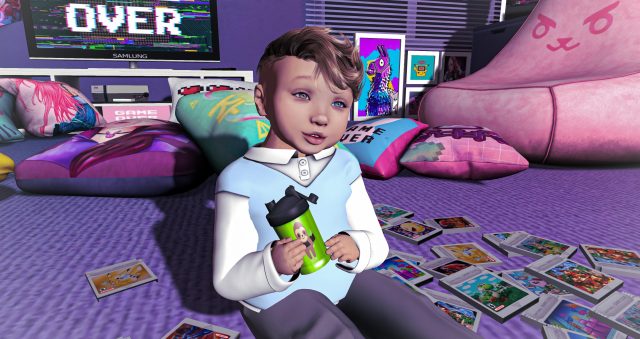In today’s fast-paced world, ensuring that our children stay adequately hydrated can often feel like a daunting task amidst the hustle and bustle of daily life. As parents, caregivers, or educators, we understand the vital role hydration plays in our children’s overall health, energy levels, and ability to focus. Yet, with their busy schedules filled with school, play, and extracurricular activities, it’s easy for this crucial aspect of their well-being to be overlooked. This article aims to offer practical and compassionate guidance on how to keep kids hydrated throughout the day, providing you with simple yet effective strategies that fit seamlessly into your routine. Let’s explore how small, mindful changes can make a big difference in nurturing our children’s growth and vitality.
Understanding the Importance of Hydration for Children
Ensuring that children stay hydrated is crucial for their overall health and well-being. Water is essential for maintaining body temperature, supporting digestion, and promoting optimal brain function. Yet, convincing kids to drink enough water can be a challenge. Here are some effective strategies to make hydration a fun and regular part of their day:
- Make it Accessible: Keep water bottles within easy reach. A colorful, personalized bottle can encourage kids to drink more often.
- Infuse with Flavor: Add slices of fruits like oranges, strawberries, or cucumbers to their water for a refreshing twist.
- Set a Routine: Encourage regular water breaks, especially during playtime and meals.
- Incorporate Hydrating Foods: Offer fruits and veggies with high water content such as watermelon, cucumbers, and oranges.
For a quick reference, here’s a simple table to help you understand how much water children typically need:
| Age Group | Daily Water Intake |
|---|---|
| 1-3 years | 4 cups |
| 4-8 years | 5 cups |
| 9-13 years | 7-8 cups |
By making small, consistent changes and leading by example, you can help your children develop healthy hydration habits that last a lifetime.

Creative Ways to Encourage Regular Water Intake
Transforming water intake into a fun and engaging activity can be a game-changer for keeping kids hydrated. Here are some creative approaches to make water more appealing:
- Infused Water Magic: Let kids choose their favorite fruits and herbs to infuse in water. Options like strawberries, cucumbers, mint, or lemon can add a burst of flavor and color, making hydration more exciting.
- Colorful Water Bottles: Invest in a selection of vibrant and playful water bottles. Kids will love showing off their personalized bottles, and they can even decorate them with stickers for extra fun.
- Hydration Chart: Create a daily hydration chart where kids can track their water intake. Offer small rewards or stickers for reaching hydration goals, turning it into a playful challenge.
To further engage them, consider setting up a simple table to track daily water intake:
| Day | Glasses Drank | Reward |
|---|---|---|
| Monday | 5 | Sticker |
| Tuesday | 6 | Extra Playtime |
| Wednesday | 4 | Storytime Choice |
By incorporating these creative methods, staying hydrated becomes a delightful part of the day rather than a chore.

Making Hydration Fun with Kid-Friendly Drinks
Encouraging children to stay hydrated can be a fun adventure with the right approach. By transforming regular drinks into exciting concoctions, you can make hydration an enjoyable part of their day. Here are some creative ideas:
- Fruit-Infused Water: Add slices of strawberries, oranges, or cucumbers to water for a splash of flavor. Let kids choose their favorite fruits to infuse, making them feel involved in the process.
- DIY Smoothie Station: Set up a mini smoothie bar with different fruits, yogurt, and a blender. Let kids experiment with flavors, creating their own delicious and nutritious smoothies.
- Colorful Ice Cubes: Freeze fruit juices or pieces of fruit in ice cube trays. Add these vibrant cubes to water for a visually appealing and flavorful twist.
| Drink Idea | Main Ingredient | Fun Element |
|---|---|---|
| Rainbow Lemonade | Lemon Juice | Layered Colors |
| Berry Blast | Mixed Berries | Colorful Ice Cubes |
| Tropical Twist | Pineapple Juice | Umbrella Garnish |
By introducing these fun drink options, you’ll not only keep kids hydrated but also engaged and excited about what they’re drinking. Remember, the goal is to make hydration a delightful experience rather than a chore.

Setting a Daily Routine to Ensure Adequate Hydration
Establishing a daily routine is crucial for keeping kids hydrated. Consistency helps children develop habits that can last a lifetime. Start by setting specific times for water breaks. These can be integrated into their daily schedule, like before school, during breaks, and after physical activities.
- Morning Hydration: Encourage a glass of water as soon as they wake up. This helps kickstart their metabolism and ensures they start the day refreshed.
- School Water Bottle: Ensure they carry a refillable water bottle to school. A fun, colorful bottle might just make them more inclined to drink regularly.
- Post-Activity Drinks: After sports or playtime, remind them to drink water to replenish lost fluids.
| Time of Day | Suggested Water Intake |
|---|---|
| Morning | 1 cup (250 ml) |
| Midday | 2 cups (500 ml) |
| Afternoon | 1 cup (250 ml) |
| Evening | 1 cup (250 ml) |
Incorporating reminders can be beneficial too. Set alarms or use apps that prompt them to take a sip. Parents can lead by example, joining their children in water breaks, making it a family routine. Remember, each child is different, so adjust the routine to suit their specific needs and activity levels.








































